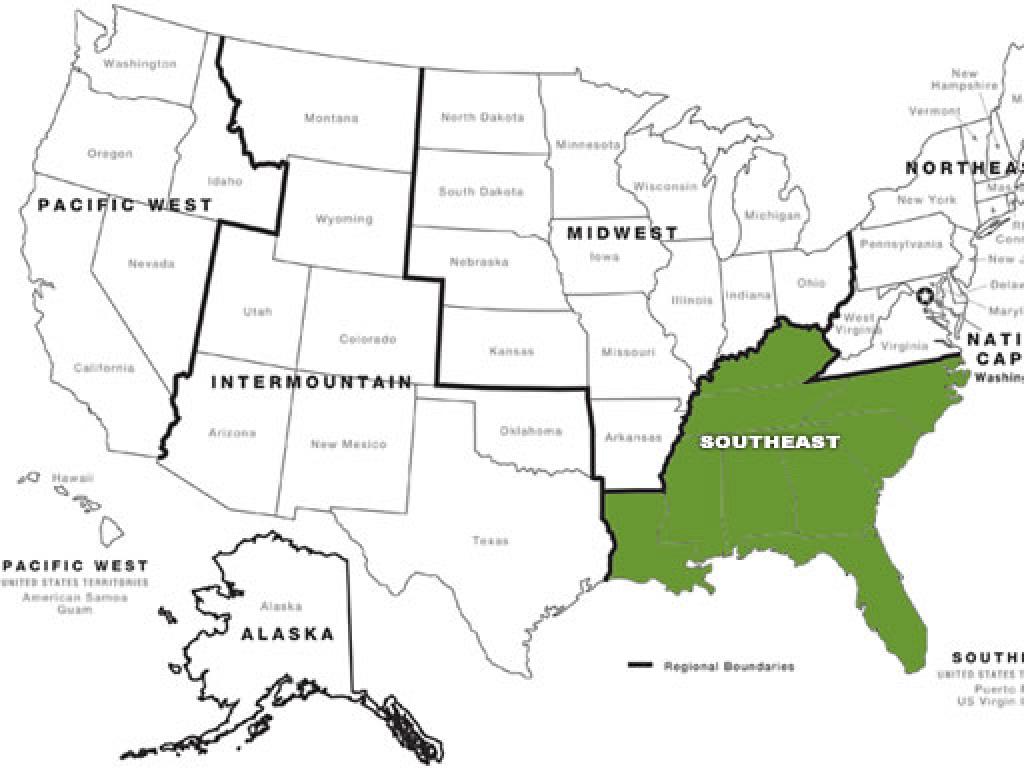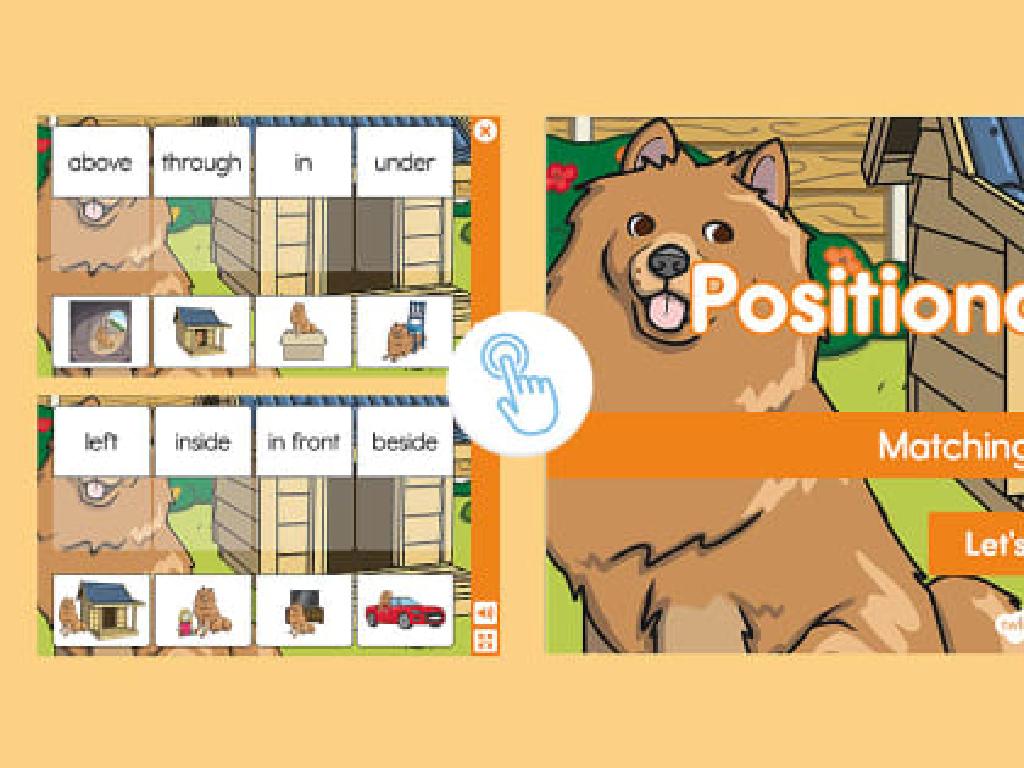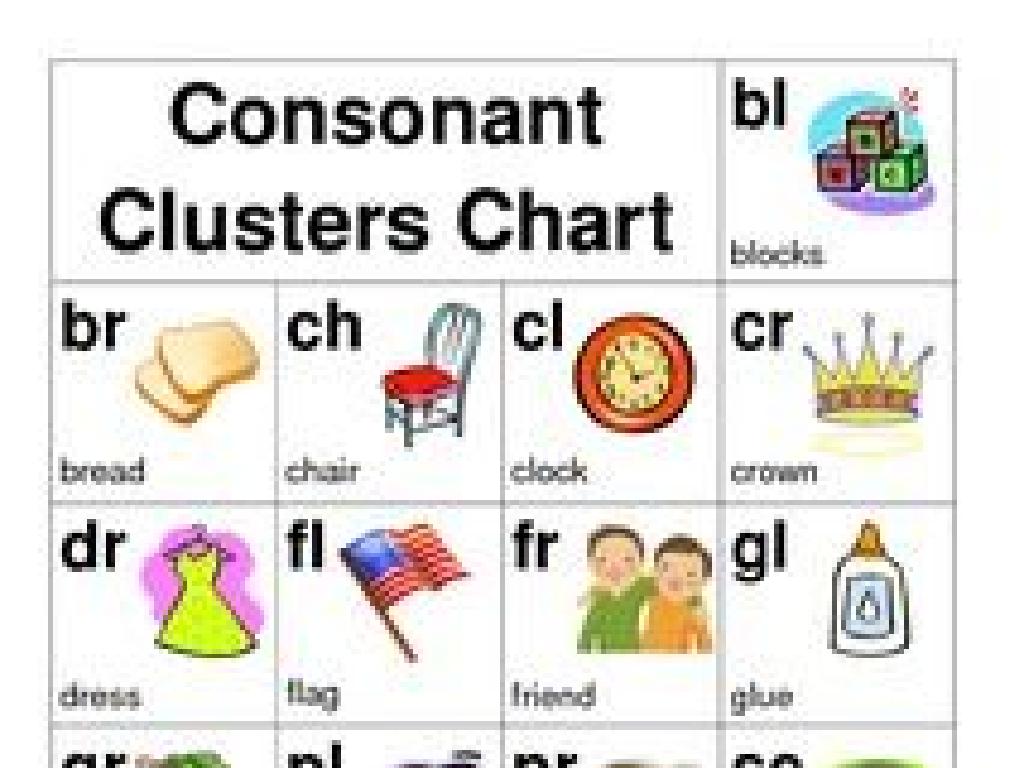Which Consonant Blend Does The Word Start With?
Subject: Language arts
Grade: Kindergarten
Topic: Consonant Blends And Digraphs
Please LOG IN to download the presentation. Access is available to registered users only.
View More Content
Welcome to Consonant Blends!
– Learning about consonant blends
– What are consonant blends?
– Two or more consonants together making a blended sound, like ‘bl’ in ‘block’
– Examples of consonant blends
– ‘bl’ in ‘blue’, ‘cr’ in ‘crab’, ‘sn’ in ‘snack’
– Practice identifying blends
– We’ll listen to words and pick out the starting blends
|
This slide introduces the concept of consonant blends to Kindergarten students. Begin by explaining that consonant blends are groups of two or more consonants where each consonant’s sound can be heard, but they blend together to begin words. Provide clear examples using common objects and words that the children are likely to know, such as ‘block’, ‘blue’, ‘crab’, and ‘snack’. Engage the students with an interactive activity where they listen to words and try to identify the consonant blends at the beginning of each word. This will help them understand the concept and recognize these blends in their reading and writing activities.
Consonant Blends: Let’s Listen!
– What’s a consonant blend?
– When two letters like ‘s’ and ‘t’ make a sound together, like in ‘star’.
– Blends can start or end words
– Like ‘st’ in ‘star’ or ‘nd’ in ‘hand’.
– Blends are smooth, not separate
– We say ‘fl’ in ‘flag’, not ‘f’ and ‘l’ by themselves.
– Practice with fun examples
|
This slide introduces the concept of consonant blends to Kindergarten students. Begin by explaining that a consonant blend is when two or more consonants are next to each other in a word and you can hear each sound they make as they blend together. Use examples where blends are at the beginning, like ‘st’ in ‘star’, and at the end, like ‘nd’ in ‘hand’. Emphasize that we don’t pronounce each letter separately; they slide together smoothly. Engage the class with fun examples and encourage them to listen for the blends in words. Practice with words that are familiar to them and use visual aids or props to help them associate the blends with the sounds they make.
Listening to Consonant Blends
– Listen for blends in words
– Find the blend at the start
– ‘bl’ in block
– The word ‘block’ starts with ‘bl’
– ‘st’ in star, ‘cr’ in crab
– ‘Star’ starts with ‘st’, ‘crab’ with ‘cr’
|
This slide is aimed at helping Kindergarten students recognize consonant blends at the beginning of words through listening exercises. Start by explaining that blends are when two letters come together to make a sound. Play audio clips of words with clear consonant blends and ask the students to listen carefully. After each word, pause to ask the class what blend they heard at the beginning. Use visual aids like pictures of the examples provided to help them associate the blend with the word. Encourage the students to repeat the words and the blends. This interactive approach will help them remember the blends and improve their phonetic skills.
Spotting Consonant Blends in Words
– Learning to identify blends
– Focus on word beginnings
– ‘fl’ blend example: flower
– The word ‘flower’ starts with the ‘fl’ sound
– ‘gr’ blend example: grapes
– The word ‘grapes’ begins with the ‘gr’ sound
|
This slide is aimed at helping Kindergarten students recognize consonant blends at the beginning of words. A consonant blend is when two or more consonants are blended together, but each sound can be heard in the blend. Start by explaining what a blend is and then show how to spot them at the start of words. Use common examples like ‘flower’ and ‘grapes’ to illustrate the ‘fl’ and ‘gr’ blends. Encourage the children to say the words out loud to hear the blend. Practice with more examples and ensure that students can identify the blend sounds by themselves. This activity will build a foundation for reading skills by enhancing phonemic awareness.
Practice Time: Consonant Blends
– Listen to the teacher’s word
– Identify the starting blend
– Practice with ‘sn’ in snake
– ‘sn’ like the beginning of ‘snake’
– Practice with ‘cl’ in clock
– ‘cl’ like the start of ‘clock’
|
This slide is for a class activity focused on identifying consonant blends at the beginning of words. The teacher will say a word out loud, and the students will determine the consonant blend that the word starts with. Start with easier blends like ‘sn’ and ‘cl’ to build confidence. For the activity, the teacher should have a list of words prepared, each starting with different consonant blends. After saying a word, give the students a moment to think before they respond. If they struggle, help them by repeating the word and emphasizing the starting blend. Encourage participation from all students and provide positive feedback to reinforce their learning. Possible activities could include a blend bingo game, a matching game with blend cards, or a ‘blend hunt’ where students find objects around the room that start with certain blends.
Consonant Blend Matching Game
– Play a fun matching game!
– Match words to consonant blends
– Examples: ‘fl’ in flower, ‘br’ in bread
– Work in pairs to find matches
– Learn consonant blends together
|
This interactive game is designed to help Kindergarten students recognize and learn consonant blends at the beginning of words. Set up pairs of cards, one set with words and the other with consonant blends. Students will work in pairs to match each word to its correct consonant blend. For example, they will match ‘flower’ with ‘fl’ and ‘bread’ with ‘br’. This activity encourages teamwork and discussion among students as they think about the sounds at the start of each word. As a teacher, facilitate the game by guiding students who may struggle and ensure that each pair is participating. After the game, review the correct matches together and praise the students for their teamwork and learning.
Consonant Blend Craft Activity
– Create consonant blend cards
– Use colorful paper to make your cards
– Draw a word starting with a blend
– If you choose ‘bl’, you could draw a ‘bl’ueberry!
– Share your blend card
– Show your friends what you’ve made
– Have fun learning blends!
|
This slide introduces a craft activity designed to help Kindergarten students learn about consonant blends in a fun and interactive way. Provide students with cardstock or construction paper and drawing materials. Guide them to choose a consonant blend, such as ‘bl’, ‘st’, ‘cr’, or ‘gr’, and then think of a word that starts with that blend. They can draw a picture representing the word on their card. For example, for the blend ‘bl’, a student might draw a blueberry or a blanket. Once everyone has created their card, allow time for the students to share their work with the class, reinforcing their understanding of the blend and the word they chose. This activity promotes creativity, phonetic awareness, and public speaking skills as they present their cards.
Class Activity: Blend Bingo!
– Let’s play Blend Bingo together
– Listen for words starting with blends
– Blends are two letters that make a sound, like ‘bl’ in block
– Cover the blend on your bingo card
– Each card has different blends, like ‘st’, ‘br’, ‘cl’
– First to cover all blends wins!
|
This interactive game is designed to help Kindergarten students recognize consonant blends at the beginning of words. Provide each student with a bingo card that has various consonant blends. As the teacher calls out words, students will listen for the starting blend and cover it on their card. The first student to cover all the blends on their card wins the game. This activity reinforces phonemic awareness and the concept of consonant blends in a fun and engaging way. Possible words to call out include ‘stop’, ‘brave’, ‘clap’, ‘green’, ‘snail’, ‘truck’, ‘flame’, ‘plum’, ‘grass’, ‘slide’. Ensure to articulate words clearly and repeat if necessary. Celebrate the winners and encourage participation from all students.
Review and Goodbye: Consonant Blends
– Recap on consonant blends
– We learned that blends are two letters making one sound, like ‘bl’ in ‘block’.
– Find more consonant blend words
– Can you find words starting with ‘st’, ‘cr’, or ‘fl’?
– Praise for today’s learning
– Looking forward to next class
|
This slide is meant to wrap up the lesson on consonant blends. Start by reviewing what consonant blends are and how they function in words. Encourage the children to think of additional words that start with the blends they’ve learned today. This not only reinforces their understanding but also helps them apply the concept. Offer praise to acknowledge their hard work and progress in today’s lesson, fostering a positive learning environment. Lastly, express enthusiasm about the next class to maintain their interest and excitement for learning more about language arts.






